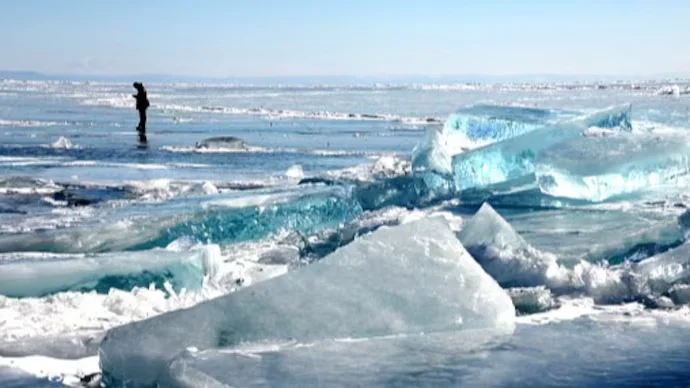‘Zombie virus’ buried in ice for 48,500 years could trigger deadly pandemic
Scientists had recently revived a set of 'zombie viruses' from the melting Arctic permafrost. These viruses, from thousands of years ago, could cause a deadly disease outbreak.

In a chilling revelation, scientists have identified a “zombie virus” buried in ice for approximately 48,500 years, raising concerns about the potential risk of a deadly pandemic. This discovery underscores the intricate relationship between climate change and the revival of ancient pathogens, posing new challenges to global health security.
The virus, aptly named the “zombie virus” due to its ability to come back to life after millennia in frozen conditions, was unearthed from permafrost in Siberia. As the Earth’s climate warms and permafrost thaws, ancient viruses, and bacteria, previously dormant, have the potential to resurface, presenting a unique threat to modern-day populations.
The 48,500-year-old virus belongs to the Pithovirus genus, and its resurrection in a laboratory setting has prompted scientists to explore its characteristics and potential risks. While the virus is harmless to humans and animals, its ability to reactivate raises concerns about the broader implications of climate change on the release of ancient pathogens.
The discovery of such “zombie viruses” adds a layer of complexity to the ongoing discourse on climate change and its multifaceted impacts. As temperatures rise, permafrost thaws and ancient viruses awaken, the global community faces the challenge of understanding and mitigating the potential health risks associated with these ancient pathogens.
This revelation also underscores the interconnectedness of environmental health and human health. The delicate balance of ecosystems, disrupted by climate change, has the potential to influence the emergence and re-emergence of infectious diseases, necessitating a holistic approach to address the root causes of such threats.
As scientists delve into the study of ancient viruses, the focus extends beyond the laboratory to consider broader implications for public health preparedness. Understanding the dynamics of these ancient pathogens and developing strategies to mitigate potential risks become crucial components in the ongoing efforts to combat emerging infectious diseases.
In conclusion, the discovery of a “zombie virus” buried in ice for over 48,000 years serves as a stark reminder of the intricate relationship between climate change and global health security. As the Earth’s climate continues to evolve, the potential re-emergence of ancient pathogens poses new challenges that require collective and interdisciplinary efforts to safeguard the well-being of current and future generations. The “zombie virus” revelation serves as a call to action for heightened awareness, research, and preparedness in the face of evolving environmental and health landscapes.




